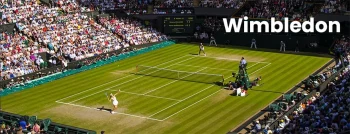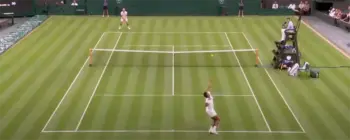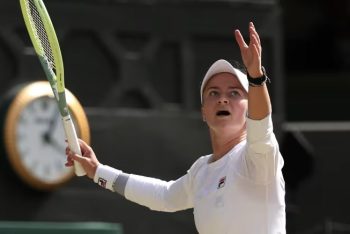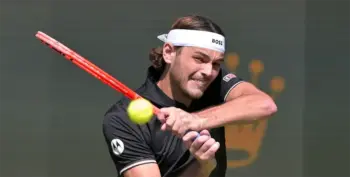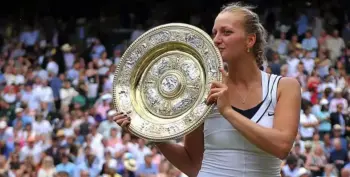Wimbledon and tennis go together like strawberries and cream. Funny that. Not only is it a Grand Slam tournament, making Wimbledon one of the most important events in the tennis calendar, but it’s also rich with history and prestige.
Wimbledon remains the only major played on grass, which makes it a rather unique event in today’s landscape. There aren’t many grass tournaments anyway, and having a Grand Slam on it makes it that much more difficult to win.
It’s arguably the most prestigious event in the world for various reasons and a relic of ancient tennis of sorts, as grass is the quintessential tennis surface. It’s how the sport began, which only adds more romanticism to the whole thing.
Neatly positioned in the middle of summer during tourist season, it regularly attracts lots of fans from around the world who enjoy some good old-fashioned tennis on grass. If you plan to go, check out our tips for visiting Wimbledon and also our Wimbledon betting page.
When is the 2025 Wimbledon? This year the vent is being held from Monday Jun 30th to Sunday, July 13th.
Latest from our blogs
History of Wimbledon
When talking about the history of Wimbledon, you have to start at the beginning. It’s the oldest tennis tournament in the world, first held in 1877, so 147 years ago. The story of how it began was rather simple: the game was conceived by a British general as an outdoor spin-off of real tennis.
It was first held in 1877 at a private tennis club, and the rest would be history. Since then, Wimbledon has grown to become the most prestigious tennis tournament in the world, precisely because of its history.
The event prides itself on this and doesn’t change much, which is why all outfits at the event are still the traditional all-white from the past. Wimbledon was also vital in popularizing tennis as a sport worldwide, with similar events popping up in the years after it was formed.
The first few editions were held at Worple Road, which was replaced by Church Road in 1922, where it’s held today. The event has resisted much change over the years but added roofs in recent years to combat the frequent rains.
Starting in 2025, line judges will be replaced by electronic live calling, becoming the final major to implement the change. Some things won’t change, though, as the all-white dress code still remains a staple of Wimbledon’s unique charm.
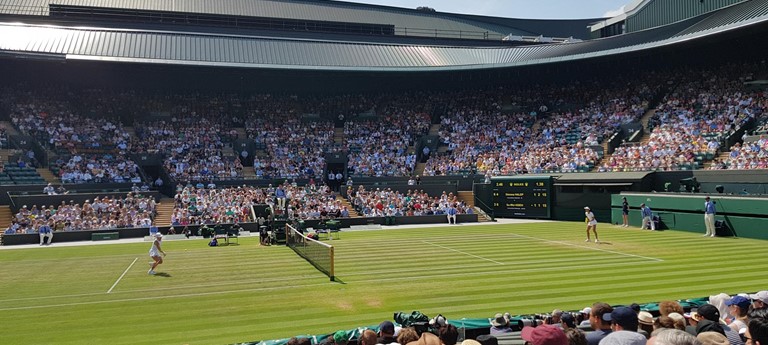
Wimbledon Venue and Attendance
The Wimbledon Championships are held at the All England Lawn Tennis and Croquet Club, which is a complex that boasts around 18 grass courts. There are other types of courts in the facilities as well, but these 18 are mostly used for Wimbledon.
There have been plans for the club to expand facilities; however, that was met with resistance from local residents, so the matter is still up in the air. All of the facilities are very modern and up to date, featuring some of the best grass you will ever see.
The first few days of the event are a sight to behold, especially Centre Court, which is the largest of the bunch. There are a couple of show courts that don’t boast the biggest capacity but certainly offer lots of unique charms, oozing with history. The main court was built in 1922 and still stands today.
The show courts are as follows:
- Centre Court – 14,979 capacity
- No. 1 Court – 12,345 capacity
- No. 2 Court – 4,000 capacity
Out of these courts, the two main courts are the only ones featuring roofs, which were added after years of the event having to battle rain delays (frequent in England). As one of the most prestigious events in the world, it attracts lots of visitors every day.
Total attendance of over half a million people is common at Wimbledon, which is meaningful considering that the courts are not the biggest.
What Is the Wimbledon Prize Money?
The prize money for the 2025 Wimbledon has now been confirmed, an increase of 7% compared to the prize money the year before, means the total prize pool is now 53.5 million GBP.
- £3,000,000 to men’s and women’s singles champions
- £1,520,000 to singles runner ups
- £680,000 to doubles champions (per team)
- £66,000 for making the round of 128
Ranking Points
As a Grand Slam, big ranking points are up for grabs at Wimbledon as well. Here’s a look at how these are allocated:
- Champion – 2000 points
- Runner up – 1300 points
- Semi-finalist – 800 points
- Quarter-finalist – 400 points
- Round of 16 – 200 points
- Third round – 100 points
- Second round – 50 points
- First round – 10 points
- Qualifying – 30 points
Past Wimbledon Champions
Here’s a look back at who has found success in London over the past five years in all events:

Men’s Singles Wimbledon Champions
- 2020 – not held
- 2021 – Novak Djokovic
- 2022 – Novak Djokovic
- 2023 – Carlos Alcaraz
- 2024 – Carlos Alcaraz
Women’s Singles Wimbledon Champions
- 2020 – not held
- 2021 – Ashleigh Barty
- 2022 – Elena Rybakina
- 2023 – Marketa Vondrousova
- 2024 – Barbora Krejcikova
Men’s Doubles Wimbledon Champions
- 2020 – not held
- 2021 – Mektic/Pavic
- 2022 – Ebden/Purcell
- 2023 – Koolhoff/Skupski
- 2024 – Patten/Heliovaara
Women’s Doubles Wimbledon Champions
- 2020 – not held
- 2021 – Hsieh/Mertens
- 2022 – Krejcikova/Siniakova
- 2023 – Hsieh/Strycova
- 2024 – Townsend/Siniakova
Mixed Doubles Wimbledon Champions
- 2020 – not held
- 2021 – Skupski /Krawczyk
- 2022 – Skupski/Krawczyk
- 2023 – Pavic/Kichenok
- 2024 – Zielinski/Hsieh
Wimbledon Records
Here are a few records related to Wimbledon:
- Roger Federer has the most singles championships ever (8).
- Federer also has the most match wins at Wimbledon (105).
- Novak Djokovic has the longest unbeaten streak on Centre Court (10 years).
- Federer and Borg are tied with the most consecutive trophies (5).
- Martina Navratilova has the most singles trophies in women’s tennis (9).
- Navratilova has the most Wimbledon trophies combined (20), also winning seven doubles and four mixed doubles titles.
Wimbledon & Strawberries
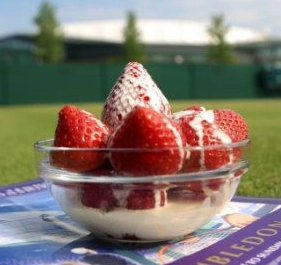
One of the signature things about Wimbledon are the strawberries. Carlos Alcaraz tattooed a strawberry-themed tattoo after winning Wimbledon because they’re so heavily associated with the event.
It dates back to when the event began in the 19th century, as that fruit was a sign of prosperity back in the day. There were no fridges, they didn’t last long, and their season coincided with the event, so they became a staple for those watching.
Over time, the tradition stuck around, so these days, everybody who goes to the event makes sure to try out the famed strawberries. As you can imagine, they’re everywhere once the event kicks off.
Wimbledon’s All-White Dress Code
One of the first things that sticks out with Wimbledon is the players’ all-white dress code. It was established early on at the event because at that time it was decided that white masks sweat stains the best.
When the event came around during the Victorian time, sweat stains were seen as improper and unacceptable, so the white dress code was felt as the best way to combat that. Over time, it simply became something that separates Wimbledon from other events, which is at least part of why it was kept.
It remains the only event on the calendar to have a dress code, though rules were bent a little bit in recent times after women were allowed to wear colored underpants, which wasn’t the case in the past. It’s unlikely to change, though, as players have come to appreciate it as a nice tradition as well.
Interesting Facts About Wimbledon
Before we leave, here are some interesting facts you might not know about Wimbledon:
- It’s not only the oldest Grand Slam in the world but also the oldest tennis event ever.
- Wimbledon is widely regarded as the most prestigious tennis event in the world and hence the pinnacle of a player’s career.
- It became the last Grand Slam to remove line umpires from the courts with 2025 marking the year it’s going to be implemented.
- Women and men started to be equally compensated only in 2007 some 30 years behind the US Open.
- Wimbledon is often referred to as ‘SW19’, because of the tournament’s postcode.


